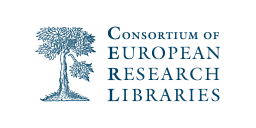By Hans Brandhorst and Etienne Posthumus
Intro
In 1619 Johannes Theodor de Bry published Julius Zincgreff’s Hundred Ethical-Political Emblems. Emblem LXXX uses a quote from Vergilius’ Bucolica as its motto: “We cannot all do everything“. Its pictura, created by de Bry’s son-in-law Matthäus Merian, shows a set of keys hovering over some buildings in a landscape.
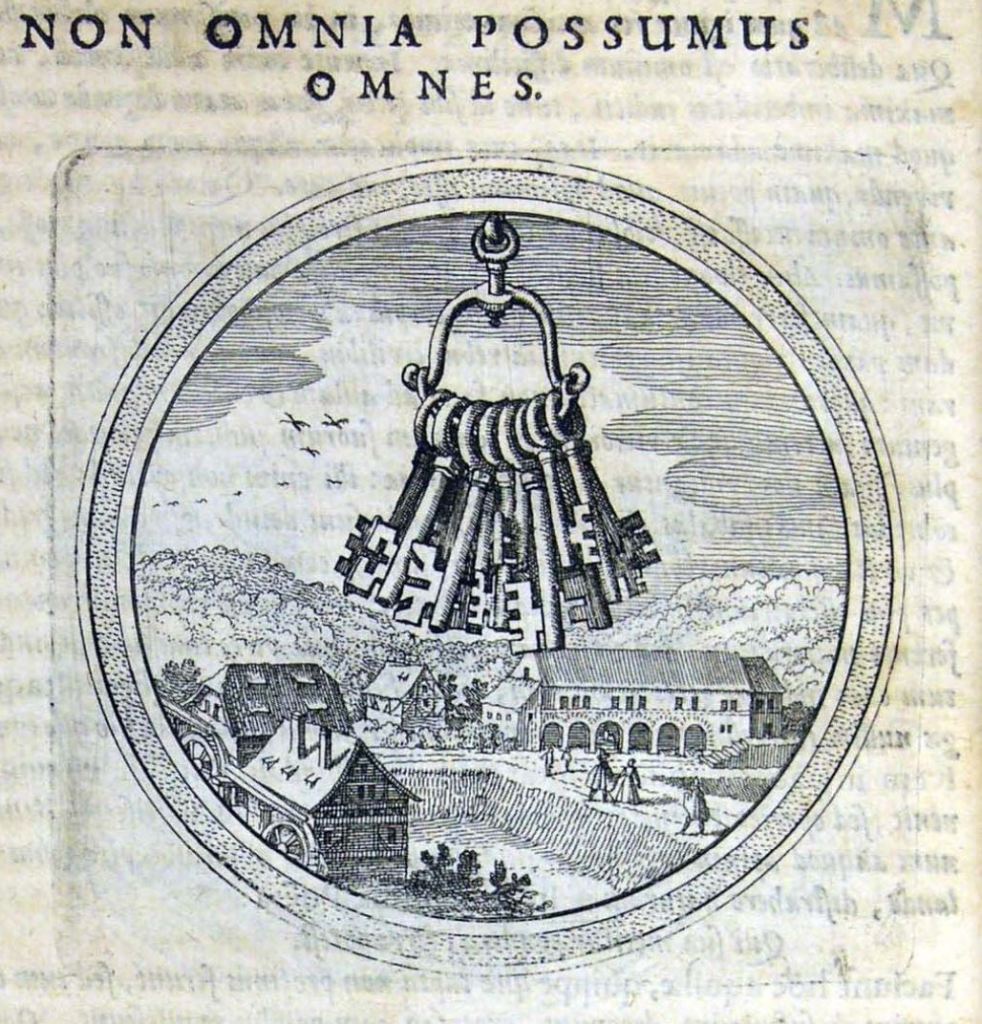
Its French subscriptio states that “une clef ne peut pas ouvrir toute serrure” : one key cannot open every lock. Its moral is that there is not one key that fits all humans. We are all different – as intended by God and Nature.
As so often there is the profound truth of the cliché in this emblem. The emblematic game, however, also invites its participants to apply the moral and the imagery of the emblem to other situations and problems. So, by applying its message to the problem of giving access to the sources of culture we are just adding a modern facet to an old idea.
Iconclassplus Edition
On May 14th 2024 we launched the new version of the online Iconclass classification system (you’ll find this Iconclass Browser at https://iconclass.org).
Iconclass has been around for well over half a century and since the 1970’s it has been used to classify the content of millions of images in heritage collections. It was published as “an iconographic classification system” so it is not surprising that it has been applied almost exclusively to visual collections. Rarely has it been used to classify the content of books and articles about iconography, or of the textual sources, like the Bible or Ovid’s Metamorphoses, that have inspired so much of our visual heritage.
To Henri van de Waal it was self-evident that the themes and concepts gathered in Iconclass could be used to give access both to images and to texts relevant for the study of images. Perhaps due to the way the world of the Humaniora is organized in libraries, museums, and research institutes, this idea was not put into practice beyond the original publication of Iconclass where every volume of the classification was matched by a volume of bibliography. As a result, the bibliography not only included studies about major iconographic themes from the Bible or classical mythology. It also contained thousands of references to literature about the visual aspect of domains as diverse as agriculture, fashion, warfare, family life, eating and drinking, housing, animals and plants, sports and leisure, transport, and the postures and gestures of the human body.
Forty years after the final volume of the original set was published, Van de Waal’s pragmatic philosophy of standardization is more relevant than ever. Standardization is how big data is put to work for Artificial Intelligence applications. Of course, the Digital Humanities of 2024 are not the same ecosystem as the Art History of the fifties and sixties, but Van de Waal recognized the computer’s potential for information processing very early. At an art-historical conference held in Florence in 1960 he already suggested using “a Hollerith system or an electronic brain” to process Iconclass notations. But even he could not have foreseen the extent of the digital revolution. So, whether the new material we are taking on board and the new technologies we deploy would have met with his approval, we shall never know.
You are cordially invited to explore the site to form your own opinion. When you do, the following summary of the new developments may be helpful.
Visual search: a practical implementation of A.I.

A visual search – searching with pictures instead of words – is implemented in the new Iconclass Browser, where it serves a simple and practical goal, i.e. to help speed up the process of tagging heretofore unindexed pictures. Millions of pictures have already been tagged with Iconclass. Pictures in the Iconclass dataset that are visually similar to unindexed ones may very well help the user to find relevant, ready-made descriptors, thus accelerating the assignment of metadata.
The application of computer vision technology to the Iconclass dataset has been years in the making; it was not inspired by the recent A.I. hype. The algorithm does not produce an automatic “description” of a picture, let alone an “artificially intelligent” analysis of its meaning. Bringing many more images in the field and standardizing the metadata to retrieve them, is an important step forward, but we should not forget that contextualizing images is a historian’s job. It is a complex process where historiography needs input from disciplines as widely divergent as a.o. psychology, economy, philosophy, sociology and theology.
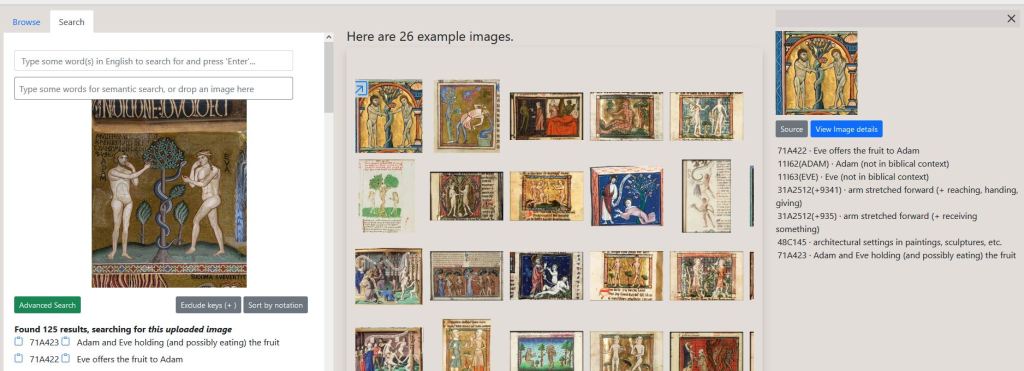
When the algorithm detects a visual similarity between the monumental mosaic on the wall of the Capella Palatina in Palermo and the miniature in an English psalter – as illustrated in this screenshot – it may help to quickly choose appropriate descriptors from the ones assigned to the manuscript. Technically impressive as the comparison algorithm may be – make no mistake about that – it will not contribute to the interpretation of the historical, liturgical or educational meaning of those artefacts.
Do note, however, that our own primary aim may be simple and practical, but the similarities suggested by A.I. could still inspire interesting discoveries…
Modernizing and expanding the Bibliography
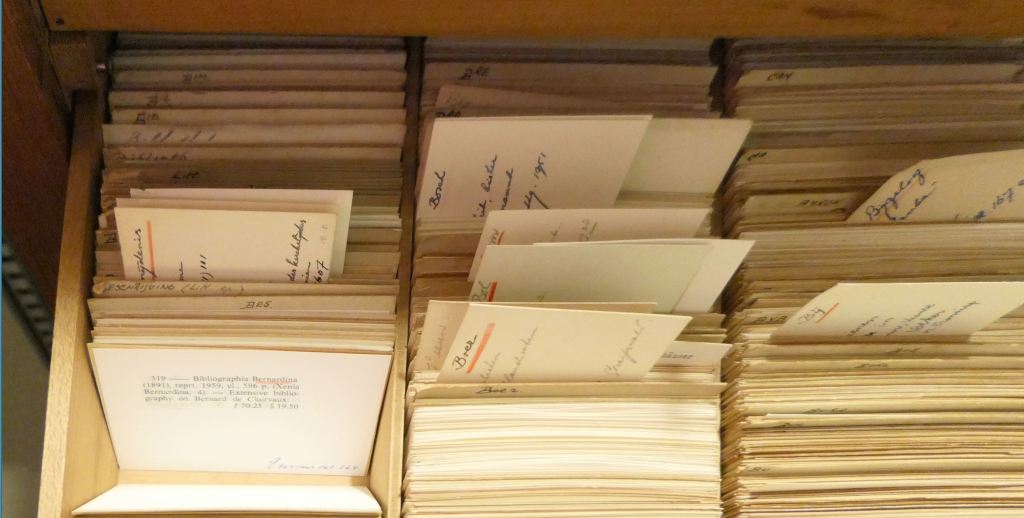
Van de Waal’s filing cards, the original core of the Iconclass bibliography, are still preserved at Leiden university. Over the years their content has been converted, first to printed volumes and then to computer files. And now these bibliographic references are integrated in the online Iconclass Browser. They are an important expansion of the previous edition, but in a sense they provide “vintage” information and need to be modernized.
A forty year gap in gathering bibliographical information cannot be bridged with a vintage strategy. Moreover, the broad scope of Iconclass and the hybrid composition of the dataset – digital pictures and digitized and printed texts – makes completeness an irrelevant concept against the background of the flood of new publications. So, when modernizing the provision of bibliographical information we have to adjust our strategy to the changed conditions.
For every concept in the schedules for which the dataset has a “hit” we are presenting both a sample of the images and all the entries from the bibliography. Below is a screenshot that shows the information we have for the concept 25A maps, atlases.
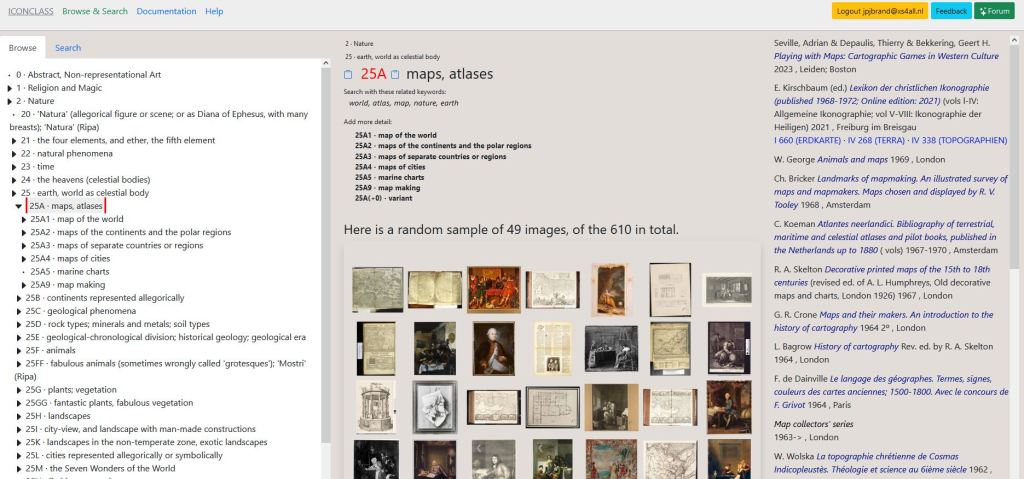
In the left hand column of this random example the concept tree is presented. A small black triangle indicates whether a concept is still further subdivided. The subdividisions of the selected term – i.e. the narrower terms – are shown in the central column, together with a zoomable sample of images. Originating from various collections and projects, those images range from actual atlas illustrations to maps pinned to a wall, e.g. as the background of a portrait.
In the right hand column the literature we have about the iconography of maps and atlases is gathered. New literature gradually supplements the original entries. The entries are sorted by date of publication according to an inverted chronology; make sure to scroll down for the older literature.
In addition we are linking the entries to handpicked OCLC’s Worldcat items. This provides additional information about the availability of thousands of books and articles. Moreover, many of the older books and articles have by now been digitized by libraries and wherever possible we shall make copies available on the Iconclass site, copyright permitting.
Enriching the older entries with links to OCLC, harvesting full text PFD’s, and tagging both older and new literature manually with Iconclass codes are the main elements of our adapted strategy. In due course we aim to open up the bibliography to user-supplied entries. It is tempting to use “crowd-sourcing” here, but “expert-sourcing” might be the better term.
Linking to texts that inspired images
The Bible, Ovid’s Metamorphoses, Cesare Ripa’s Iconologia, the Iliad and Odyssey, Andrea Alciato’s Book of Emblems, Erasmus’s Adagiorum chiliades are examples of texts that have been important sources of inspiration for the visual arts. Thousands of the images based on their stories, the events they describe and the ideas they convey, have been indexed with Iconclass descriptors. The Iconclass concepts assigned to those images are thus in a sense referencing their textual sources by proxy.
Not every researcher has all of those texts readily available in his or her personal memory. At the same time they are now often available in full text in the shared memory of the internet. It therefore makes sense to provide deep links to relevant chapters and verses of online sources.
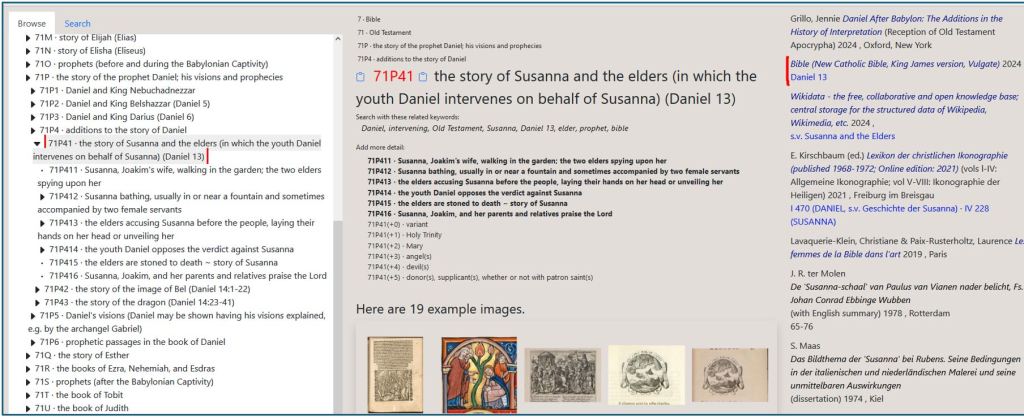
Here too our aim is mainly practical. As illustrated in this screenshot, deep links to a readily available full text of the Bible are offered at appropriate locations in the Iconclass schedules. In this case at: 71P41 the story of Susanna and the elders (in which the youth Daniel intervenes on behalf of Susanna) (Daniel 13).
The deep link to the Bible Gateway website (next screenshot: https://www.biblegateway.com/) not only pulls up the story in a convenient way, but also reminds the user that Daniel 13 is a deuterocanonical text that is included in the modern Catholic translation and the Vulgata text, but not in the (protestant) King James version of the Bible.
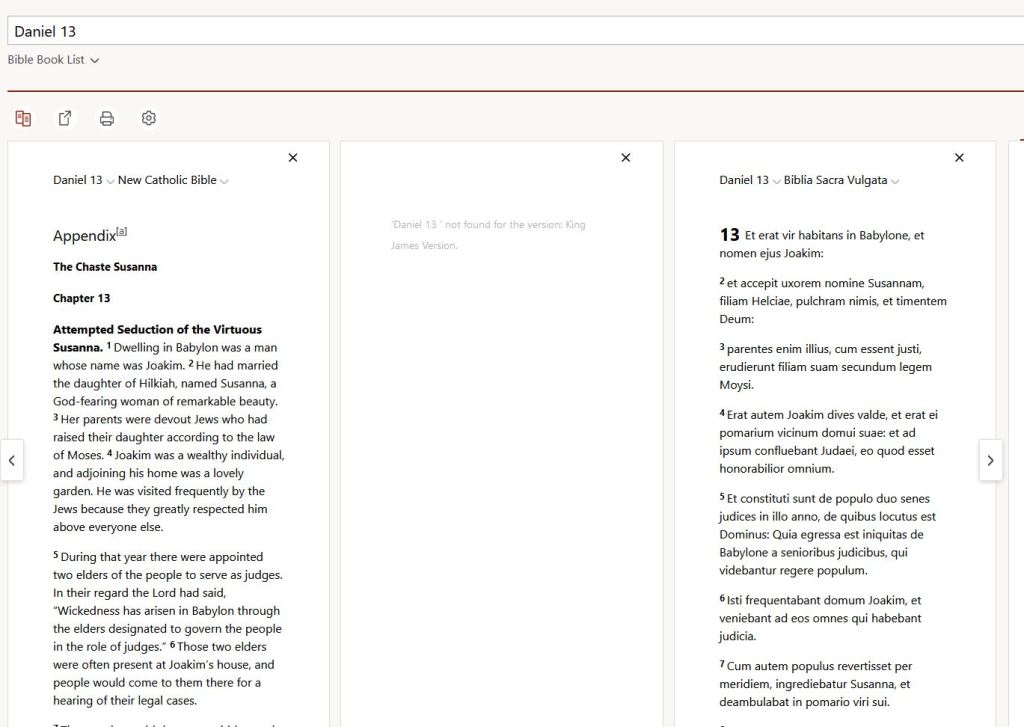
In a similar way a modern English translation of Ovid’s Metamorphoses by A.S. Kline is indexed with Iconclass concepts. Thus a search for 97AA1 Daphne changed into a laurel-tree: … will not only pull pictures of the transformation of Daphne from the Iconclass dataset and offer references to studies about the theme. It will also offer a simple link to a readily available full text version of Ovid’s text – as is demonstrated by the next two screenshots.
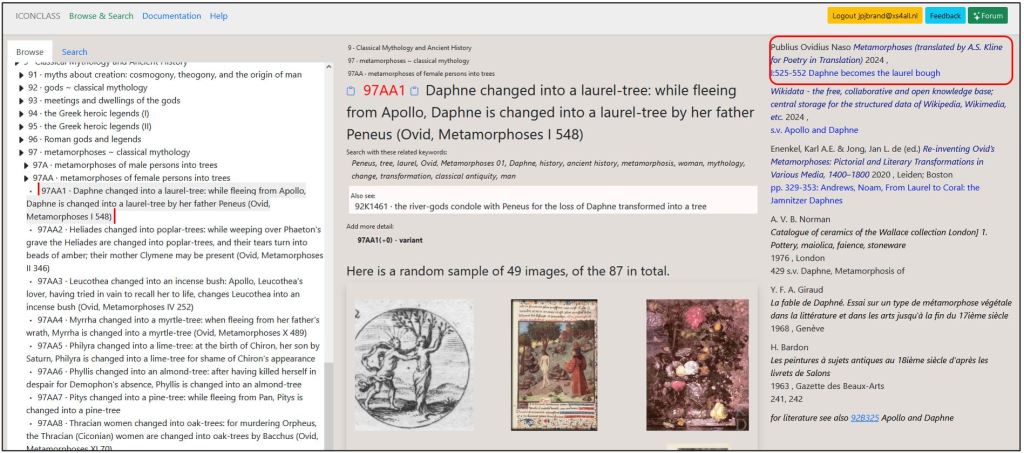
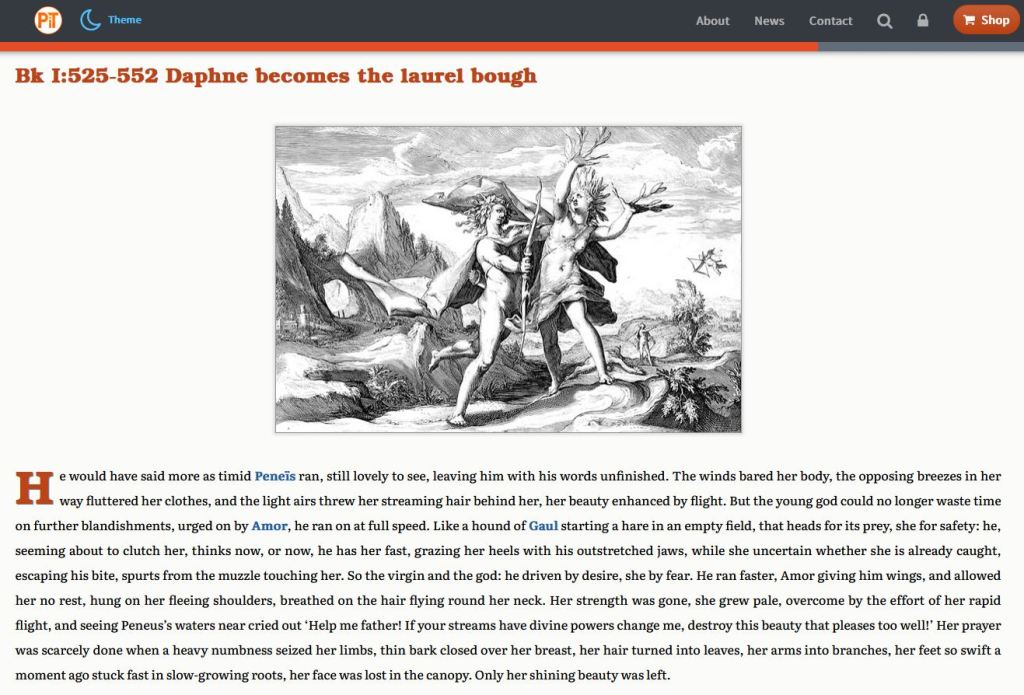
A concordance of world views
As he developed his ideas for Iconclass, Henri van de Waal kept a folder with the label “Other systems“. This illustrates that he was keenly aware that there are different ways to organize information about the world and its visual representation, and that he drew inspiration from systems like those used at the Warburg Institute and the Princeton Index of Christian Art.
It is in the same spirit and with similar intentions that we are now adding deep links to “other systems” of iconographic classification to this new version of the Browser. Those systems include the Warburg Institute’s Iconographic Database, the Princeton Index of Medieval Art, Wikidata, the Chinese Iconography Thesaurus, the Art & Architecture Thesaurus, Kirschbaum’s Lexikon der christlichen Ikonographie and the Reallexikon zur Deutschen Kunstgeschichte.
Precisely because those other systems represent alternative ways of looking at the world, links have to be constructed manually. Concepts take on their semantic colour from their location in a system, so even if they are very similar if seen in isolation, their context may be quite different. In the long run the connections between systems might be used as input for machine learning purposes, but starting with an effort of human intelligence gives them a firmer foundation.
Two examples should suffice to demonstrate how it works.

In Iconclass 23D42 spring, ‘Ver’; ‘Primavera’ (Ripa) is the most generic of a series of concepts to tag visualizations of the spring season. In the new Browser it is connected to the most generic concept in the Chinese Iconography Thesaurus (to “spring“, as shown in the next screenshot). But it is also linked to more idiosyncratic concepts like the “sound of spring” and “warm and radiant spring“.
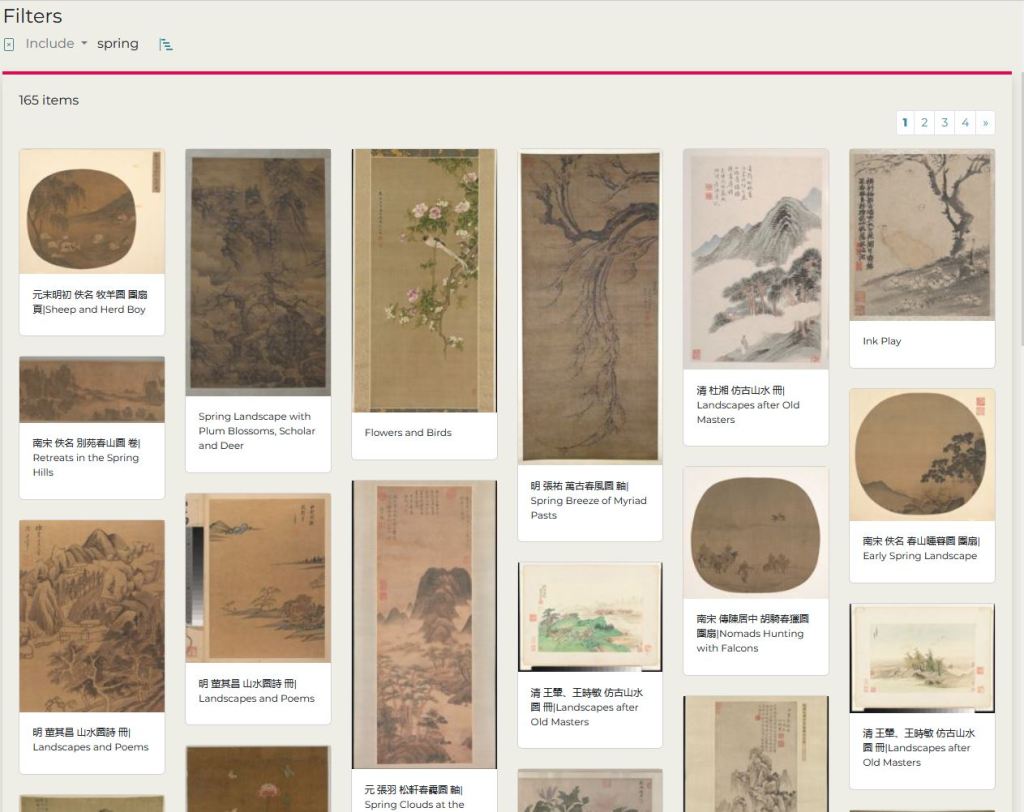
As the next screenshot illustrates, the Iconclass concept 73D24 Last Supper (in general) … is not just linked to the Bible text, but also to the Princeton Index, Wikidata and the Warburg Database. The latter link not only connects the Iconclass descriptor with the Warburg’s generic “Last Supper” concept, but it also uses the Warburg system’s own cross-references to pull up a series of very specific typological juxtapositions for the Last Supper theme.

In this way we provide useful shortcuts, for example to the Warburg’s collection of examples of the Gathering of manna (Exodus 16:14-18) being used as an antitype for the Last Supper.
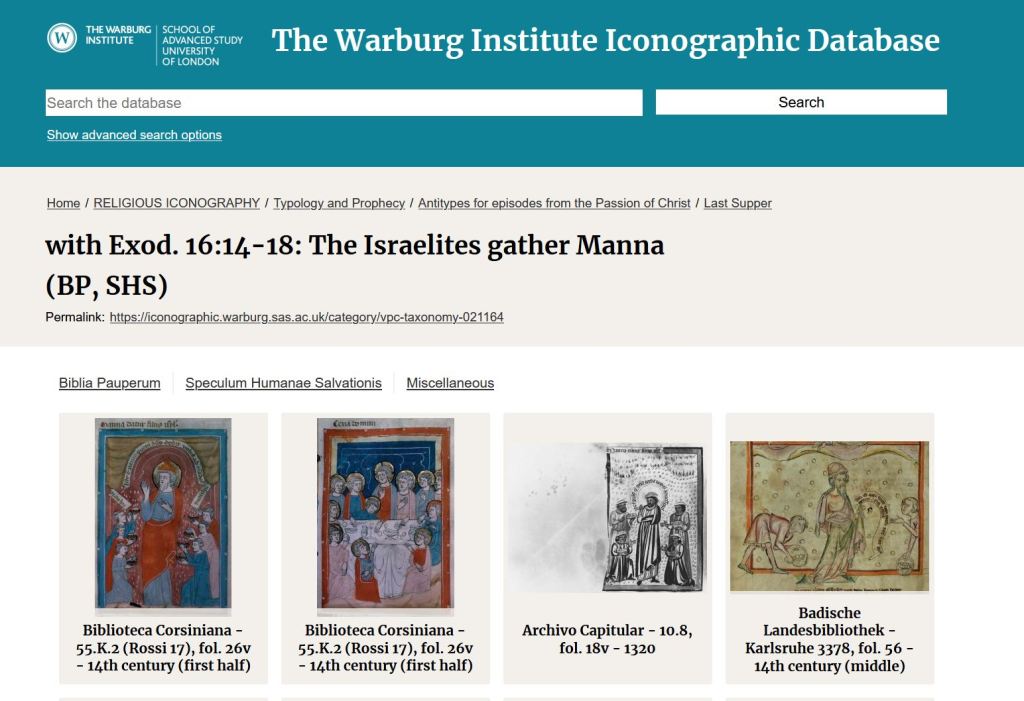
Here too it may be worthwhile to scroll further down the bibliography column where you will find some older publications about the Biblia Pauperum and the Speculum Humanae Salvationis which are themselves sources for the typological juxtapositions offered on the Warburg website.
The deep links to “other systems” and to sources like the Bible are mixed in with the regular entries in the bibliography. For practical purposes the dates of their appearance on the internet are taken as the date of their publication, so they are usually presented towards the top of the right hand column. At this moment the types of references are not distinguished visually, but we are eager to receive any suggestion to improve the user experience of the site…
Thanks to various combinatory options, Iconclass has a code base of over 1.2 million concepts. It also has a hybrid structure. It combines this large code base of pre-coordinated concepts with alphabetical listings that are without theoretical limits.
As those who register as users (it is free of charge …) can see for themselves, this creates a net that catches the themes, motives and formal details of most works of art produced in the west, from Greek vases to the visuals of computer games.
Van de Waal would have been the first to point out the shortcomings of the tool he invented, also in this new digital setting. In all likelihood he would have argued that no single system can be a key to open all locks, but he may have stated that, given its scope and granularity, Iconclass may play the very practical part of a keyring to which multiple keys are connected.
**************
The new Iconclassplus Edition is made available by the Henri van de Waal Foundation, the Public Benefit Organization established in 2022.
It can be used free of charge, but do make sure you register (at: https://iconclass.org/register) and login when you visit the site as this will drastically enhance your user experience. Registration is free.
In July 2024 the Foundation will launch the Iconclass Consortium, an initiative to organize long term support for the Iconclass system and website.
Information about the initiative will be posted on the Iconclass website in due course.
Hans Brandhorst
Etienne Posthumus
https://henrivandewaalfoundation.org/
Comments and questions: info@iconclass.org
